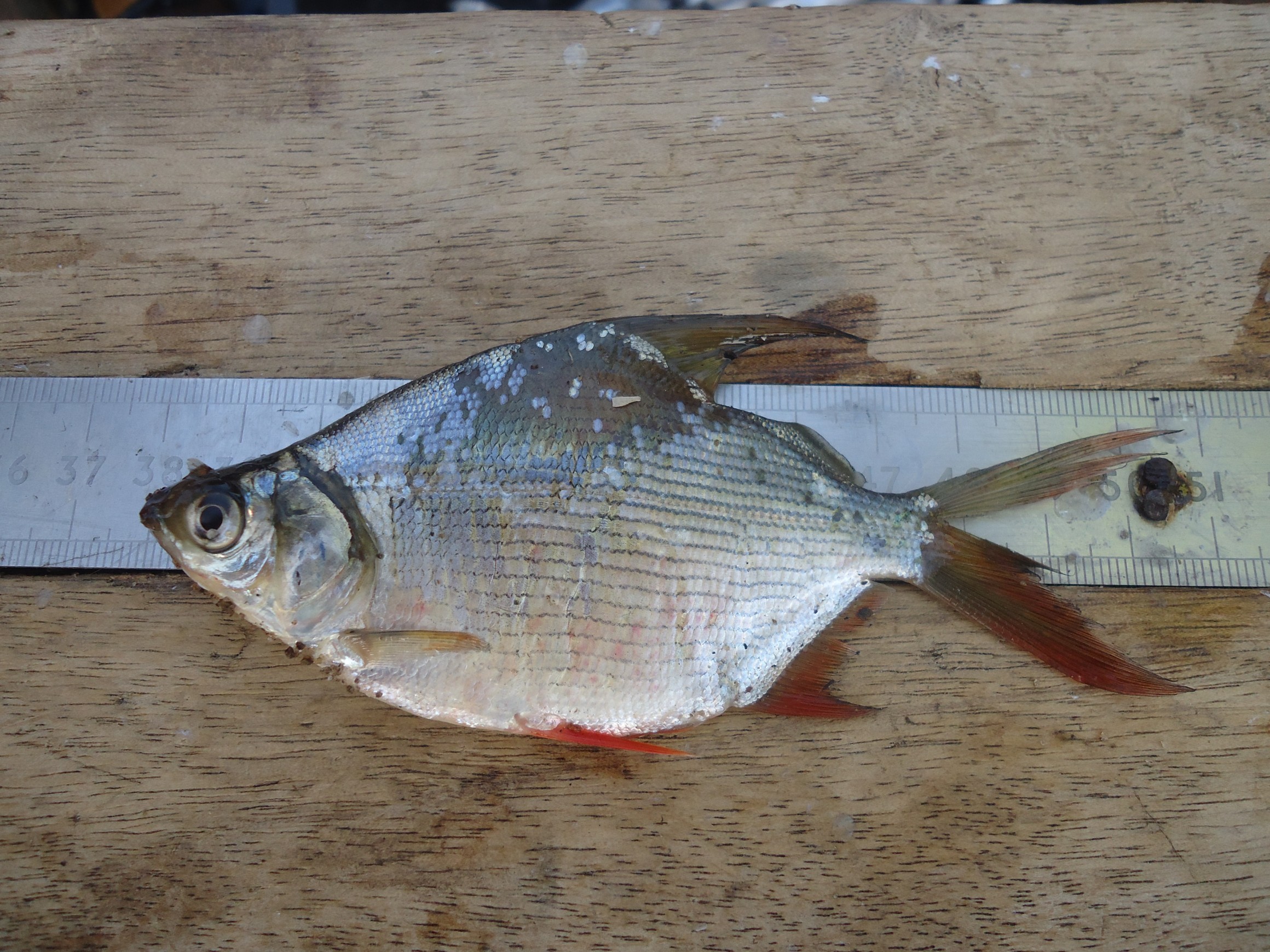Common names:
Unknown
Local: Unknown
Taxonomic tree
Kingdom: Animalia
Phylum: Chordata
Class: Actinopterygii (ray-finned fish)
Order: Characiformes (Characins)
Family: Citharinidae (Lutefishes)
Genus: Citharinus
Species: Citharinus latus (Müller & Troschel, 1844)
Number of Occurrancies: 0
Etymology (based on Sharpf & Lazara, 2018)
- Citharinus: –inus, adjectival suffix, i.e., harp-like, referring to scale rows of C. citharus, which are said to resemble the strings of a harp or lute.
- latus: wide, allusion not explained (name coined by Ehrenberg, who collected type), perhaps referring to larger adipose fin compared to C. citharus, or to elevated body shape of all citharines.
Synonyms: click here to view synonyms
Type locality: "Hab. in Nilo". Type specimen in Berlin Museum (fide Boulenger, 1909).
Distinguishing characters for the genus
- A deep, short body (1.75-2.33 times longer than deep) and strongly compressed
- Small cycloid scales
- Large mouth with single row of minute teeth
- The lower halves of the lower jaw are narrowly united
- Dorsal fin situated behind the insertion of the pelvic fin
- Adipose dorsal fin large and scaled
- Caudal fin scaled on its basal part only
- Silvery color; base of the adipose dorsal fin dark grey. Pelvic and anal fin orange red except at the base. Interior lobe of the caudal fin with a distinct orange flush; all other fins grey.
Distinguishing characters for the species
- Base of the adipose fin longer than its distance from the posterior margin of the dorsal fin
- lateral line with 60-77 scales.
Distribution in Uganda: Lake Albert, Murchison and Albert Nile
Occurence: Native
Habitat: Dermersal, living and feeding at the bottom; common in shallow inshore waters and absent or rare in deep waters. Its offshore range is somewhat greater than Distichodus nefasch.
Feeding: Data is scanty; however, given its similar ecological requirements with C. citharinus, the species may feed on macroplankton, particulary those elements such as Crustacea and diatoms which settle on the lake bottom.
Biology: No information is available on breeding, but like C. citharus eleswhere, the species may breed in swampy areas during the season of heavy rainfall. The species can attain a maximum size of 84 cm standard length.
Economic importance/End use: The species was economically important for communities around Lake Albert but suffered marked decline due to overfishing and is currently more of incidental catch
IUCN conservation status: click here to view IUCN status
Threats: Fishing
Main reference
- Greenwood PH. 1966. The fishes of Uganda. The Uganda Society, Kampala. 131 pages.
- Sharpf C, Lazara J.K. 2018. Fish Name Etymology Database v16. www.etyfish.org

